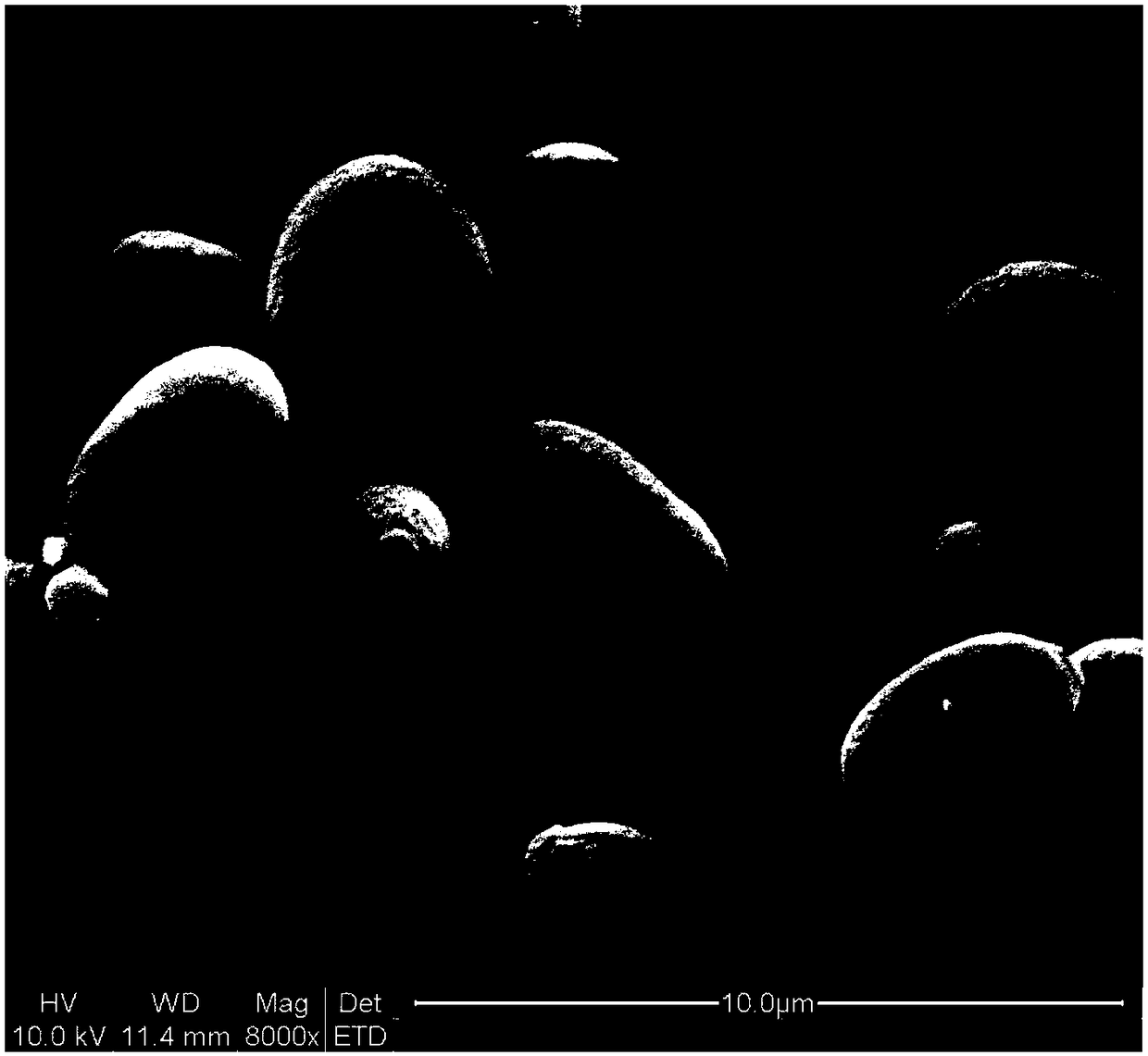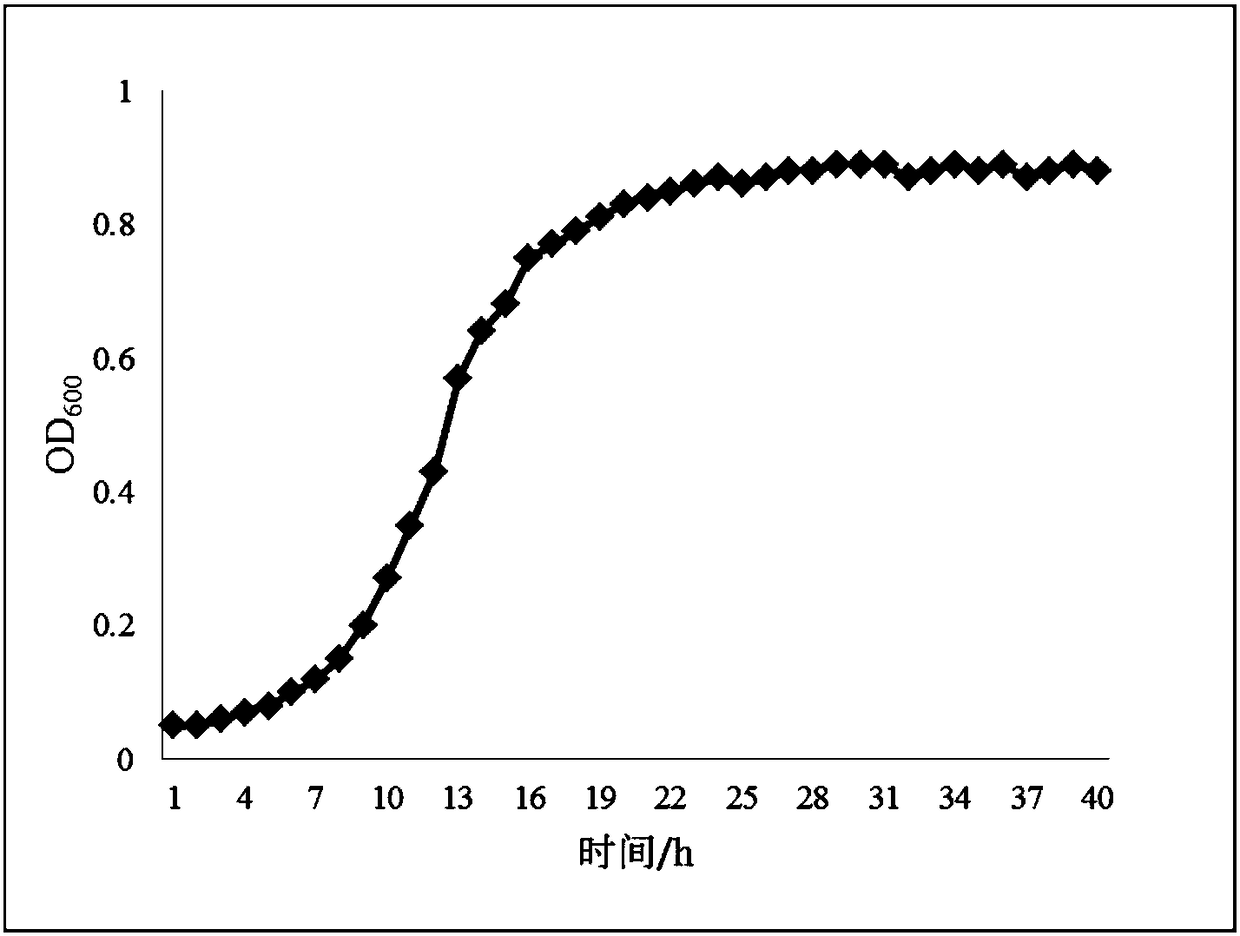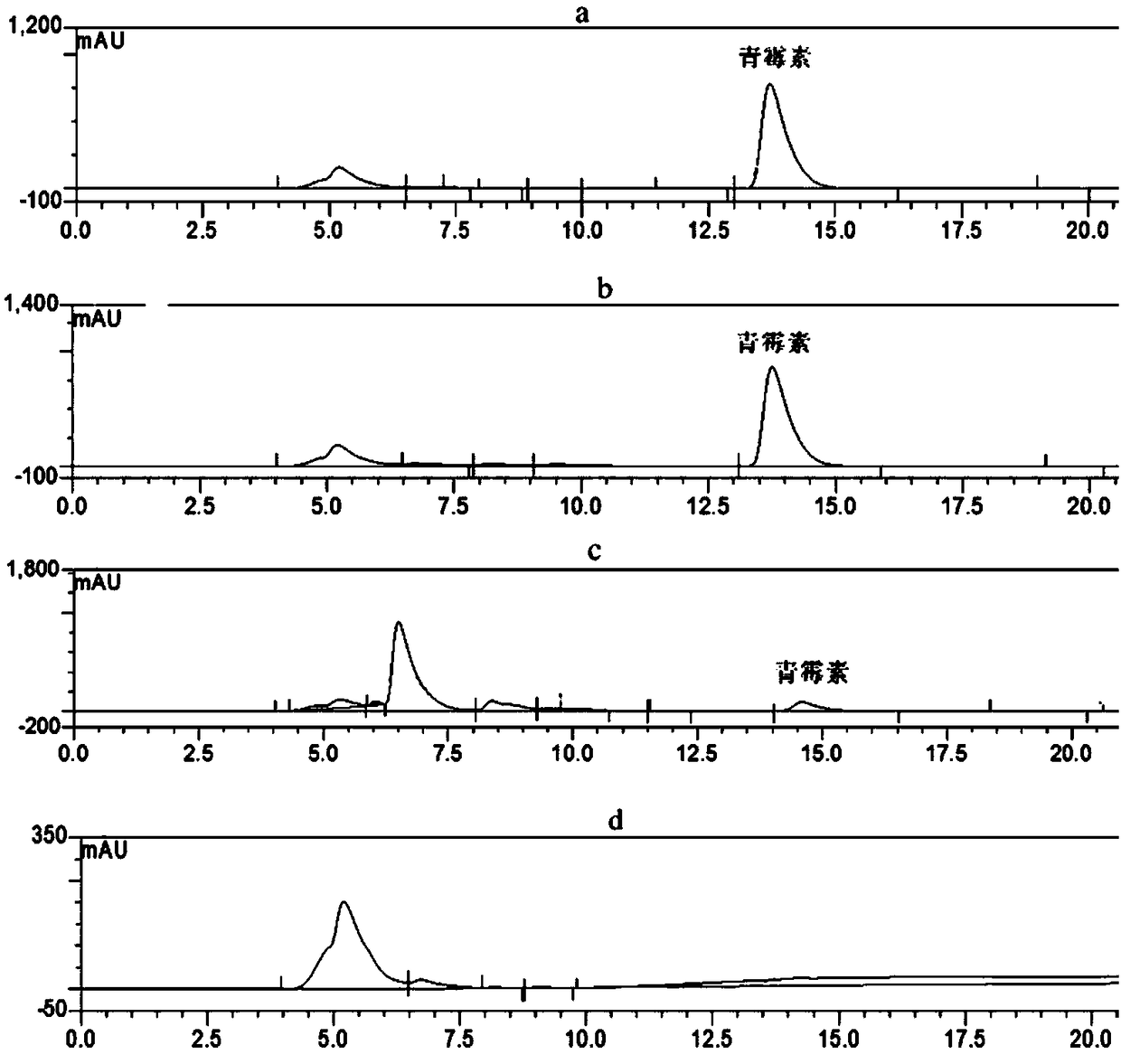Rhodotorula mucilaginosa for degrading penicillin as well as application thereof
A technology of Rhodotorula marcescens and penicillin, applied in the field of microorganisms, can solve the problems of not much, low concentration of penicillin, low efficiency of penicillin degradation, etc., and achieve high degradation effect
- Summary
- Abstract
- Description
- Claims
- Application Information
AI Technical Summary
Problems solved by technology
Method used
Image
Examples
Embodiment 1
[0026] Embodiment 1: strain screening
[0027] Weigh each 10g of the sample soil, put them into conical flasks equipped with 100ml of aseptic and one layer of glass beads respectively, vibrate on a shaker for 10min, fully break up, and make 10 -1 g·L -1 Bacterial suspension, diluted 10 times with distilled water to 10 -5 g·L -1 , 10 -6 g·L -1 , 10 -7 g·L -1 Concentration, these three concentrations of bacterial suspension were respectively applied to the pre-prepared YPD medium containing penicillin concentration of 12g / L, and the amount of application was 100 μL. Cultured in a constant temperature incubator at 30°C. After culturing for 24 hours, the grown strain was transferred to the YPD medium with a concentration of 20 g / L penicillin, and after several separation and purification operations, a single colony strain was obtained, which was named Anti-Pen20.
[0028] Such as figure 1 As shown, under the transmission electron microscope, the cells are oval, without fl...
Embodiment 2
[0029] Embodiment 2: Physiological and biochemical studies of bacterial strains
[0030] (1) Optimum growth temperature experiment
[0031] The strains were inoculated on YPD medium and cultured in constant temperature incubators at 25°C, 30°C, 37°C, and 40°C for 1-2 days, and the growth of each strain was observed and recorded. It is known that the optimum growth temperature range of the strain is 25-30°C.
[0032] (2) Optimum growth pH experiment
[0033] Prepare YPD medium with pH values of 3.0, 4.0, 5.0, 6.0, 7.0, and 8.0, adjust the pH value with HCl solution and NaOH solution, and measure the pH value with a pH meter. The strains were inoculated on starch medium with different pH values, cultured in a constant temperature incubator at 30°C for 1-2 days, and the growth of each strain was observed and recorded. It is known that the optimum growth pH range of the strain is 4.0-7.0.
[0034] (3) The growth of the strain
[0035] Strains under test medium conditions: K...
Embodiment 3
[0046] Embodiment 3: detection of penicillin concentration in fermented liquid
[0047] Set up 3 groups of detection medium, the first group added penicillin to the detection medium so that the concentration was 20g / L and did not add bacterial solution, the second group added penicillin to the detection medium to make the concentration 20g / L and inoculated 10 % Anti-Pen20 bacteria solution, the third group inoculated 10% Anti-Pen20 bacteria solution directly in the detection medium without adding penicillin, placed it in a constant temperature shaker at 30°C, and then took the fermentation broth for treatment, and passed the high-performance liquid phase The chromatograph analyzes the fermented liquid, taking the penicillin standard solution (0.5g / L, 1g / L, 2g / L, 5g / L penicillin solution, using the detection medium as solvent) as the standard, the results are as follows image 3 As shown, the results show that the concentration of penicillin in the first group is almost unchang...
PUM
 Login to View More
Login to View More Abstract
Description
Claims
Application Information
 Login to View More
Login to View More - R&D
- Intellectual Property
- Life Sciences
- Materials
- Tech Scout
- Unparalleled Data Quality
- Higher Quality Content
- 60% Fewer Hallucinations
Browse by: Latest US Patents, China's latest patents, Technical Efficacy Thesaurus, Application Domain, Technology Topic, Popular Technical Reports.
© 2025 PatSnap. All rights reserved.Legal|Privacy policy|Modern Slavery Act Transparency Statement|Sitemap|About US| Contact US: help@patsnap.com



